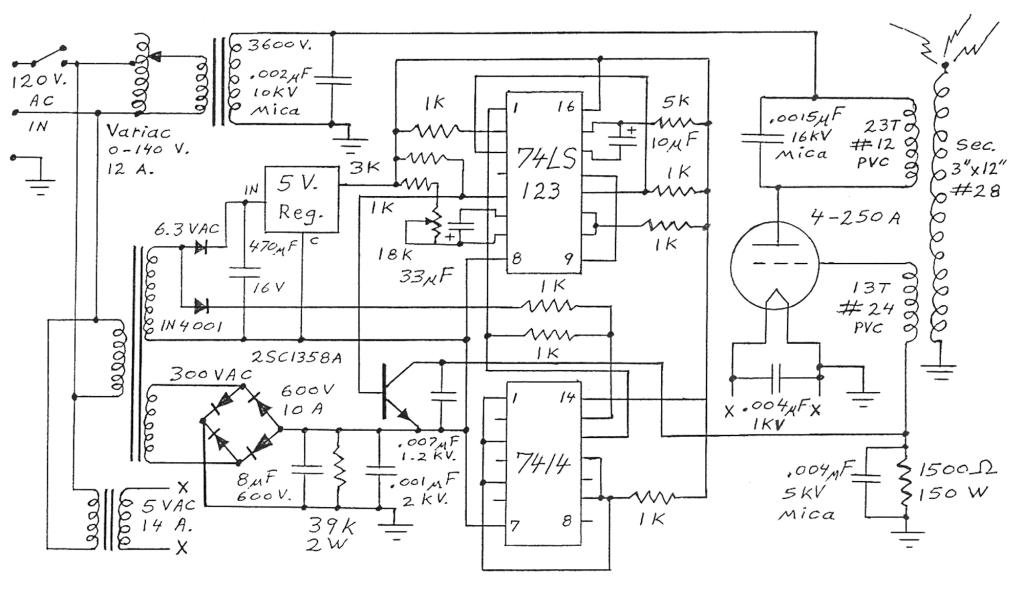TCBA Volume 15 - Issue 1
Page 12 of 18
Vacuum Tube Tesla Coil in Staccato Mode
John J. Freau, 49 Thiem Ave., Rochelle Park, NJ 07662
Many builders have built vacuum tube Tesla coils as a means for performing many interesting experiments. Common complaints, however, are steady flame-like sparks and poor efficiency. This project uses an electronic timer circuit which allows for operating the coil in a pulsed or intermittent manner. The sound of the coil takes on a rapid fire, machine gun-like, or “staccato” sound. Thus, I call this type of operation a “staccato mode.”
The appearance of the spark also varies as the pulse rate is varied. At a high rate, the spark looks like a normal tube coil spark. But as the rate is slowed, interesting finger-like and/or spike-like sparks form. Certain adjustments cause one long straight sword-like spark to form. A spinner placed on top of the secondary coil electrode can be made to appear to be stopped, or even to spin in the opposite direction due to strobe effects. And all the while, the number of spark “plumes” visible can be varied with the twist of the control knob.
Since the coil runs intermittently, efficiency becomes much greater. The slower the pulses, the lower the input power. Input power can easily be reduced by 400 percent compared with a regular tube coil. The reduced input power makes it possible to achieve long sparks using a relatively small vacuum tube because the tube can cool between pulses. Also, the coil can produce longer sparks when connected to an ordinary 120 volt, 20 amp. A.C. circuit than would otherwise be possible. This feature can be useful when demonstrating the coil in locations where A.C. power is limited.
The schematic shows a circuit which uses a transistor to enable or disable oscillation. I have also used vacuum tubes for this purpose as they are more rugged voltage-wise. Many other circuit designs could be used. For instance, a separate oscillator could drive the output vacuum tube thus eliminating the need to control the system at a high power point. The output tube would serve only as an amplifier and would automatically shut off when its oscillator/driver was turned off.
When using the staccato principle, it will still be necessary to use a heavy duty high voltage power transformer because the coil will draw heavy current during “on” times. The transformer current capability must be matched not to the average power used, but to the “steady-on” current requirements.

